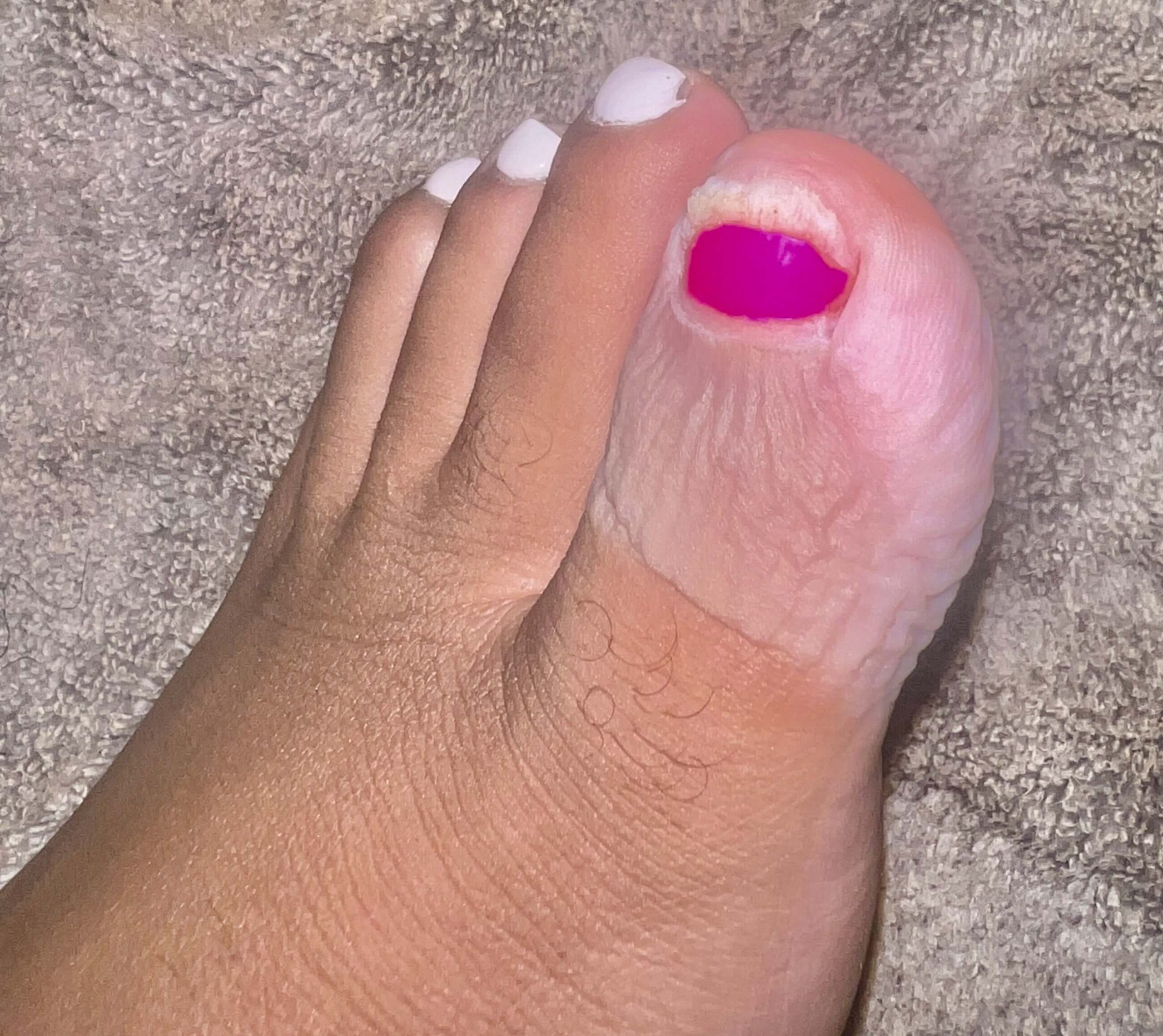Fungal Nail Treatment

Discolored Toenails are caused by Fungal Nail
The causative pathogens of toenail fungus include dermatophytes (organisms that feed on dead skin and nails), Candida (a classification of yeast), and mold. These microscopic organisms typically thrive in dark, warm, and moist environments. The insides of shoes are a perfect environment to harbor fungal organisms. Our podiatrist can diagnose the extent of the fungal nail infection and recommend the most appropriate treatment plan.
what is Fungal nail?
A fungal nail, also known as onychomycosis, is a fungal infection that affects the toenails or fingernails. It causes the nail to become discolored, thick, and brittle, and can lead to separation of the nail from the nail bed. Fungal nails are a common condition, and are often caused by exposure to warm, moist environments, such as public showers or swimming pools.
fungal nail symptoms
The symptoms of a fungal nail infection may include:
- Discoloration of the nail, ranging from white or yellow to brown or green.
- Thickening of the nail.
- Brittle or crumbly nail.
- Separation of the nail from the nail bed.
- Deformation or disfigurement of the nail.
- Foul odor coming from the infected nail.
- Pain or discomfort in the affected area.
It’s important to note that not all discolored or thickened nails are caused by a fungal infection. Other conditions, such as psoriasis or a bacterial infection, can also cause changes in the appearance of the nails. Gauld Foot and Ankle can determine the underlying cause of the symptoms and provide proper treatment.
Meet with our team to get started on your treatment for discolored toenails.
what causes fungal nail?
Fungal nail infections are caused by fungi, such as dermatophytes, yeasts, or molds. These fungi thrive in warm, moist environments, and can enter the nail through small cuts or separations in the skin around the nail. Some common factors that increase the risk of developing a fungal nail infection include:
- Fungal overgrowth: Fungi thrive in warm, moist environments. Walking barefoot in damp public areas like swimming pools, locker rooms, and communal showers increases the risk of picking up fungal spores.
- Poor nail hygiene: Not keeping the nails clean, dry, and trimmed can create an environment where fungi can thrive and enter the nail bed.
- Trauma or nail damage: Injuries to the nails, such as cracks, splits, or trauma, can provide an entry point for fungi to invade and infect the nail.
- Footwear and socks: Wearing tight, non-breathable shoes and socks that trap moisture can create an ideal environment for fungal growth. Additionally, sharing footwear or socks with an infected individual can increase the risk of fungal nail infections.
- Weakened immune system: People with compromised immune systems, such as those with diabetes, HIV/AIDS, or undergoing immunosuppressive therapy, are more susceptible to fungal infections, including fungal nail infections.
- Age and underlying health conditions: Fungal nail infections are more common with age. Certain medical conditions, such as peripheral vascular disease, psoriasis, or circulatory disorders, can also increase the risk of developing fungal nail infections.
- Nail salon exposure: Poor sanitation practices at nail salons, such as using contaminated instruments or reusing nail files, can contribute to the spread of fungal nail infections.
It’s important to keep the nails and surrounding skin clean and dry, and to avoid walking barefoot in public areas, to reduce the risk of developing a fungal nail infection.
fungal nail treatment
The treatment of a fungal nail infection depends on the severity and extent of the infection. Common treatments include:
- Topical anti-fungal medications: These are applied directly to the infected nail and surrounding skin. They can be effective for mild infections, but may take several months to show results.
- Oral anti-fungal medications: These are taken by mouth and are typically prescribed for more severe infections. They can have potential side effects, so a doctor should be consulted to determine the best option for each individual.
- Nail removal: In severe cases, the infected nail may need to be removed to allow for better penetration of topical or oral anti-fungal medications.
- Home remedies: Some people find relief from fungal nail infections using home remedies, such as vinegar or tea tree oil. However, there is limited scientific evidence to support the effectiveness of these remedies, and a doctor should be consulted to determine the best course of treatment.
- Laser Therapy: A laser light penetrates through the nail and soft tissue to both kill fungus in its path, and promotes new nail growth. Once the living fungus is zapped by the laser, healthy nails begin to grow from the cuticle of the nail. This utilizes infrared radiation which is not painful and it is safe to gently heat the base of the nail. This area of the nail is where the fungus survives.
- Micro-Drilling: A procedure based on Controlled Micro Penetration (CMP) that creates controlled micro holes in the nail plate, allowing topical treatment to reach in higher concentration levels. These CMP pathways allows for increased efficiency of the treatment without any soft tissue injury.
It’s important to follow the recommended treatment regimen to ensure the best results, as well as to prevent the spread of the infection to other nails or individuals. In some cases, a combination of treatments may be recommended for the best outcome.
Swipe Below to See a Before and After Image of Fungal Treatment







